パナマ船籍の「マリナ アイリス」の事故は偶然か??
UNDER-PERFORMING SHIPS (1年間に3回以上出港停止を受けた船舶) TOKYO MOUのHPより
★ サブスタンダード船の見つけ方 ◆海上保安庁の活動&取り組み ◆なぜ、日本から問題船が出港できるのか?
 カンボジア籍船
カンボジア籍船
 トーゴ籍船
トーゴ籍船
 シエラレオネ籍船
シエラレオネ籍船
 モンゴル籍船
モンゴル籍船
 ツバル船籍船
ツバル船籍船
 ベリーズ籍船
ベリーズ籍船
 ミクロネシア籍船
ミクロネシア籍船
 パナマ船籍
パナマ船籍
 フィジ籍船
フィジ籍船
 不適切な検査:パナマ ビューロー
不適切な検査:パナマ ビューロー
 韓国客船 Sewol沈没
韓国客船 Sewol沈没
★中国から違法船続々! ★七管内における放置外国船 ★日本は甘ちゃん!違法天国! ★無国籍船&幽霊船情報 ★元日本籍内航船! 船舶保険
◆海難情報! ◆海難2 ◆海難3 ◆海難4 ◆海難5 ◆海難6 ◆海難7 ◆海難8 ★なぜ日本から問題船が出港? ★なぜ日本から問題船が出港?P-2
 フィリピンでの船舶による油流出事故
フィリピンでの船舶による油流出事故
 ソーラー1(Solar 1)フィリピンで沈没!
ソーラー1(Solar 1)フィリピンで沈没!
 パナマ船籍の「マリナ アイリス」が沈没!
パナマ船籍の「マリナ アイリス」が沈没!
★Casualty Investigation Code(海難調査コード)2010年1月1日から適用 (USCGのホームページより)
第2回パリMOU・東京MOU合同閣僚級会議の結果について (国土交通省のHPより)
(岩崎忠夫大臣政務官が代表として参加し、サブスタンダード船の排除に向けた我が国の決意を表明)
 Shame on Japan and Japan PSC!
Shame on Japan and Japan PSC!
日本に来て活躍している小型外国船たち (素人造船(株)船舶模型課)
内航船では考えられないような改造をして、シケの中でもやってくるなんでもありの小型外国船 (YouTube)
このタグボートは、国際航海に十分な装備がされていたのだろうか?出港前に検査を受けていた のだろうか? なぜ、波が穏やかな瀬戸内海-関門海峡を通って帰らなかったのだろうか?
パナマ船籍の「MARINA IRIS(マリナ アイリス)」=139トンのトン数は、 日本トン数なのだろうか、それとも国際トン数???出港前に検査は受けていたのだろか? 検査をしたのであれば、どこの検査会社だろうか?写真を見る限りでは、膨張式いかだは、 SOLASタイプに見えない。日本の沿海タイプに見えるのだか?船が沈み、生存者はいないよう なので、全てが闇の中。同じ過ちを何度繰返せば、改善されるのだろうか!
27日午前1時35分ごろ、和歌山県日ノ御埼沖西約7キロの海上で、パナマ船籍の台船 「MARINA IRIS(マリナ アイリス)」=139トン、インドネシア国籍の 乗組員6人=から遭難警報が発信された。田辺海上保安部が巡視船4隻航空機2機で 付近を捜索していたところ、同7時30分ごろ、乗組員2人が乗ったゴムボートを発見、 救助にあたっている。
同保安部では、台船は26日午後5時ごろ神戸港を出港、シンガポールに向かっていた。 現場付近は当時、約20メートルの風が吹き、波の高さは5メートルだった。
(2003/12/27) 読売新聞
27日午前1時40分ごろ、和歌山県・日ノ御埼の西約7キロの紀伊水道で、インドネシア人6人乗り組みのパナマ船籍のタグボート「マリナ・アイリス」(139トン)が発信したとみられる遭難警報を第5管区海上保安本部(神戸)が受信した。
田辺海上保安部の巡視船などが付近の海域を捜索したところ、同7時半ごろ、乗組員とみられる男性2人が乗ったゴムボートを発見。うち1人を収容したが、もう1人はボートから転落し行方不明となった。8時35分ごろには、救命胴衣を付けて浮いていた別の男性1人を収容した。いずれも生死を確認中。
同保安部は、船体が見つかっていないことから沈没した可能性が高いとみて、残る乗組員らを捜索している。
当時現場付近は、風速12メートル、波の高さは約3メートルだったという。
同船は26日夕、神戸港を出港、シンガポールに向かっていた。
共同通信
Four dead in tugboat sinking
From correspondents in Tokyo, Japan
27dec03
FOUR Indonesian sailors are feared dead and two are missing off the Japanese coast overnight as their tugboat is believed to have foundered in rough seas.
The Panamanian-registered Marina Iris sent a distress signal at around 1.40am local time (3.40am AEDT) off the coast of Mihama Town, about 500 km west of Tokyo.
The Japan Coast Guard found four of the crew and were continuing to search for the other two, said an official at the local branch of the coast guard.
The four are feared dead "as their pupils have already enlarged", the official said, adding a doctor was likely to confirm their death later tonight.
The tug had been bound to Singapore from the western Japan port of Kobe where it was bought from a Japanese shipping company.
The sea was "turbulent" with violent winds and high waves when rescue boats arrived there early today, the coast guard official said. The tug was believed to have sunk, he added.
From Sunday Times (news.com.au)
この海難に関して国土交通省のHPでは、調査中となっている。
★ 開けない人はココをクリック
日本で動いている船が外国へ売却された多くの場合、費用が掛かるため国際航海に必要な 装備なしに現状のままで出港する。船名も日本名のままで出港する場合もある。 外国へ回航される船舶は、一般的に日本から外国籍へ国籍がわかる。 これは、大きく分けると2つあると思われる。一つは、外国で設立された会社 が日本籍の船舶を所有できない。もう一つは、ある特定の国籍に船舶を登録 することにより、安全面で船舶の回航に問題があっても、船舶が国際条約を 満足していなくとも、出港前にチェックされないことである。 参考資料:出航前の立入検査の強化 また、検査を行っていても、検査官が故意に不正な検査を行い、国際条約で要求される 証書を発行する場合もある。このような検査官が所属している 検査会社の中には 不正検査を黙認している場合もある。ポートステートコントロール(PSC)に 指摘された項目だけ是正した方が、悪名は知れ渡るが、その悪名を利用したい者もおり、 営業には影響しない。常識のある人達が利用しないだけで、ごまかしを求めている 人達はこのような検査官や検査会社を利用する。簡単にお金を稼げる。簡単に証書を 発行するだけでお金になるのである。お金の偽造よりも簡単で、処罰されない。 国際条約で要求される項目目より、ポートステートコントロール(PSC) が指摘する項目の方が少ないのでコストが掛からない。このような現状が 船の座礁に関係するのである。
最近、サブスタンダード船が日本に入港することについて問題になっている。日本で 座礁し放置された外国船の多くは日本から外国へ売却され、日本から他の外国へ向かう途中で 座礁している。今回も同じケースである。冷たい言い方であるが、タグボートは沈没したが 被害はないようだし、乗組員の全てが死亡したようなのである。 宮崎で座礁したタグボートのケース のように地方自治体が船員の帰国費用を負担する問題も発生しないので、めでたしめでたしで あろう。このような書き方に非難したい人もいるだろう。この問題を放置してきたのは、 日本の行政である。税関は、国際航海に耐えられる状態であるか関係ないので、船の輸出 として出港の許可を出す。保安庁は、これらの船が安全上で問題があろうとなかろうか関与しない。 ポートステートコントロール(PSC)だけが関与する可能性がある状態である。
日本エリアで遭難したり、座礁したら保安庁が動くのだから、税金の無駄遣いである。 安全な状態でない船を出港させるのだから、事故の可能性は高いと推測できる。しかし、 何も防止策が行われていない。今後もこのような事故は起こるであろう。死ぬのは外国人。 関係ないと言えば、それだけのことである。せめて、迷惑が掛からないように座礁しない場所で 沈没してほしいと言うことなのであろう。
なぜ下記の記事が面白いのか。海保がまとめた報告書がどのような内容だったのか知らない。 しかし、事実&判決の中で下記のようなことが書かれている。
★押船MARINA IRISは沿海船として建造され、遠洋船として建造されていない。
★押船MARINA IRISを操船した船員の中に船長は3人いたが、本船の船長としての船員免状の
資格を持っていなかった。
★復原性の問題があり、押船MARINA IRISは(UNSEAWORTHINESS)航海に適していなかった。
★保険会社の専門の検査官は、船長は押船の復原性についての情報が与えられてなかった。そして
復原性資料は押船に積まれていなかった。
★押船に必要なパイロットブックや重要なチャートが積まれていなかった。押船に設備されていた
安全備品は十分に検査されていなかった。
★押船MARINA IRISは適切に操船されていなかった。
★押船MARINA IRISの神戸からシンガポールへの航海は危険を伴う航海だった。
★押船MARINA IRISは神戸を出港するとき、(UNSEAWORTHINESS)航海に適していなかった。
沈没したパナマ船籍の「マリナ アイリス」(MARINA IRIS)のようなケースは多くある。 日本の外国船舶監督官や海保は、このような状態を放置してきた。未だに放置している。 第十一管区海上保安本部の活動は部分的なものなのか 第七管区海上保安本部もHPで 日本の港から回航中に海難をおこし放置された船舶 も紹介されているので、問題について知らないことはない。 ここで紹介されている情報は日本では公開されていない。外国の情報公開を 感謝する。問題を指摘する人達もいない。 尾道から出港したフェリーや 宮崎で座礁したタブボート も同じようなケースだったに違いない。しかし、日本の外国船舶監督官や海保の対応は遅い。
Marina Offshore Pte Ltd v China Insurance Co (Singapore) Pte Ltd and AXA Insurance Singapore Pte Ltd
Singapore High Court: Tan Lee Meng J: [2005] SGHC 238: 30 December 2005
Haridass Ho and Partners for Marina Offshore Pte Ltd
Rajah and Tann for the insurers
MarinE Insurance: Breach of Warranty as to the recommended route of the voyage: Seaworthiness of the vessel: Whether loss of the vessel caused by unseaworthiness or perils of the sea
Summary This case involved a claim against insurers for the total loss of a coastal tug whilst on an ocean voyage from Japan to Singapore. The court held that the insurers were entitled to deny liability on the grounds that 1) there had been a breach of the express warranty in the policies regarding the recommended route to be taken by the tug; 2) the tug was unseaworthy at the commencement of the voyage and that, on the balance of probabilities, unseaworthiness was the cause of her loss, rather than perils of the sea; 3)the tug’s initial unseaworthiness represented a breach of the warranty of seaworthiness implied in voyage policies under s.39(1) of the Singapore Marine Insurance Act and 4) the shipowners were privy to the unseaworthiness in breach of s.39(5) of the Act
DMC Category Rating: Confirmed
This case note has been contributed by Ang & Partners, the international contributors to the Website for Singapore
Facts
Marina Offshore Pte Ltd ("Marina Offshore") purchased a steel-hulled coastal tug, ""Marina Iris". The tug was insured by China Insurance Co (Singapore) Pte Ltd ("CIC") and AXA Insurance Singapore Pte Ltd ("AXA").
The tug was constructed as a coastal vessel and not as an ocean-going one. Prior to the finalisation of the purchase, Marina Offshore instructed TG Marine Services Pte Ltd ("TG") to conduct a pre-purchase condition survey while the ""Marina Iris" was in Kobe. The TG report set out a fairly comprehensive list of matters that required Marina Offshore’s attention before the "Marina Iris" could begin trading operations in Singapore or within South East Asia. Marina Offshore decided to have a large part of the repair work done in Singapore. Instead of being shipped on board a carrier, Marina Offshore decided that the "Marina Iris" was to sail on her own propulsion from Kobe across the Pacific Ocean to Singapore during the December monsoon.
Marina Offshore insured "Marina Iris" with CIC and AXA for one year. The cover included the delivery voyage from Kobe to Singapore. Both CIC and AXA required a condition survey to be carried out before the"Marina Iris" sailed from Kobe. TG carried out this survey as "warranty surveyor". It was not disclosed to the insurers that TG had previously carried out the pre-purchase survey.
The condition survey contained six recommendations, one of which consisted of the route of the voyage from Kobe to Singapore in fair weather conditions.
Although gale warnings had been issued, the "Marina Iris" left Kobe on 26 December 2003 with 6 Indonesian crew members. The tug sank when she was only 50 miles from Kobe. All 6 crew members perished.
Marina Offshore claimed an indemnity against CIC and AXA, on the grounds that the ship had been lost by the insured risk of "perils of the sea". Both insurers denied liability.
Judgment
- Considering that the insurers were affording cover to an unclassed tug, which was built for operations in coastal waters, to undertake a voyage across the Pacific Ocean and that both policies expressly required the warranty surveyor’s recommendations to be complied with before the tug sailed from Kobe, the recommended voyage route had to be regarded as an insurance warranty. The significance of this is that the warranty must be complied with, whether it be material to the risk or not. TG’s recommended route was for the tug to navigate along the inside coast of Japan via the Inland Sea. The tug did not follow this recommended route. The tug instead exited the Inland Sea and headed towards the North Pacific Ocean. Marina Offshore had thus breached the warranty and was not entitled to an indemnity under the policies.
- As for the risk of "Perils of the sea", this does not cover every loss or damage of which the sea is the immediate cause. There must be some casualty, something which could not be foreseen as one of the necessary incidents of the adventure.
- If the ship was seaworthy when she set out on her voyage and she then sank, on the balance of probabilities she must have sunk due to "perils of the sea". The question of the seaworthiness of the "Marina Iris" thus had to be considered.
- Seaworthiness does not refer to a fixed standard but to a relative standard varying according to the ship and exigencies of each voyage. A vessel must have a competent master and a sufficient number of competent crew. The "Marina Iris" was reported to have "three masters" but none of them possessed the necessary qualifications to be a master of the "Marina Iris" for the delivery voyage from Kobe to Singapore. As she was improperly manned, she was unseaworthy when she left Kobe.
- The "Marina Iris" was also unseaworthy in that her stability was also in issue. The insurers’ surveyor expert stated that the superstructure of the tug was unusually high in comparison to the depth of its keel. The master was not provided with the requisite information on the stability of the tug and the stability booklet was not on board the "Marina Iris".
- There were other aspects of unseaworthiness. The tug lacked the necessary pilot books and possibly important charts. The safety equipment on board was not adequately checked. There was also a suspicion that the tug did not have proper equipment to receive weather reports.
- In view of the fact that the "Marina Iris" was improperly manned and insufficient attention was paid to her stability for the delivery voyage, it would take much more to persuade the court that the tug was lost as a result of "perils of the sea". Marina Offshore had not established that the loss was due to a peril of the sea and its claim under this heading should also be dismissed.
- The Court also considered whether the warranty of seaworthiness was implied under section 39(1) of the Marine Insurance Act (Cap 387, 1994 Rev Ed). Section 39(1) applies only to voyage policies. The Court found that the insurance polices in question were mixed policies. First, there was the voyage from Kobe to Singapore, which was a "voyage risk". Secondly, after being repaired and classed in Singapore, insurance cover was afforded for trading activities within the limits of the "Singapore home trade including Indonesian waters" which was a risk covered on a time basis. Therefore, a section 39(1) warranty of seaworthiness was implied for the voyage from Kobe to Singapore. As the "Marina Iris" was unseaworthy when she left Kobe, the insurers were entitled to avoid liability on this ground too.
- Even if the policies were time policies, CIC and AXA were also entitled to rely on section 39(5) of the Marine Insurance Act to avoid liability, since the vessel was sent to sea in an unseaworthy state with the shipowner’s privity, and was lost as a result of its unseaworthiness.
Comment
This case serves as a useful illustration of the relationship between seaworthiness and perils of the sea in the marine insurance context. Given the facts of the case, the Judge’s decision is not surprising.
Sections 39(1) and (5) of the Marine Insurance Act provide as follows:-
Warranty of seaworthiness of ship
39. -(1) In a voyage policy, there is an implied warranty that, at the commencement of the voyage, the ship shall be seaworthy for the purpose of the particular adventure insured.
(5) In a time policy, there is no implied warranty that the ship shall be seaworthy at any stage of the adventure, but where, with the privity of the assured, the ship is sent to sea in an unseaworthy state, the insurer is not liable for any loss attributable to unseaworthiness.
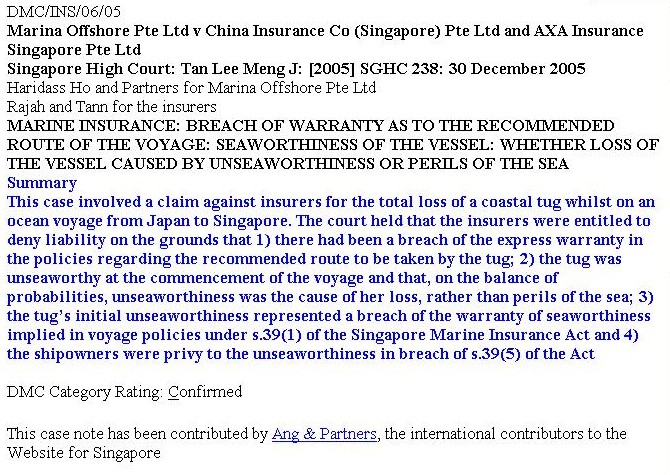
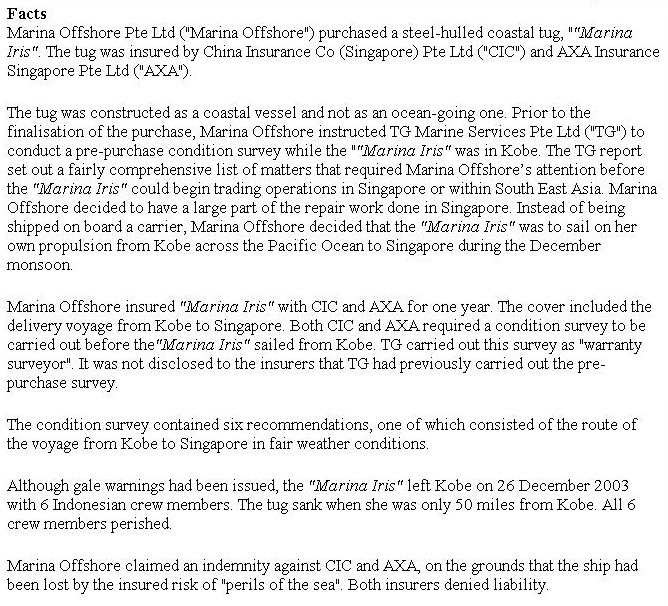
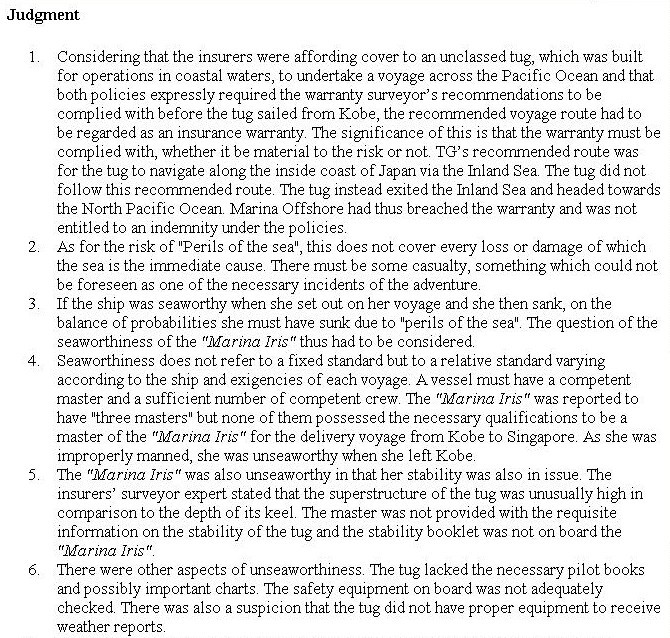
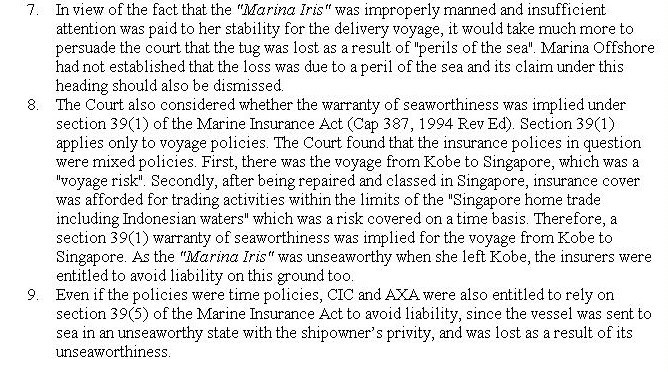
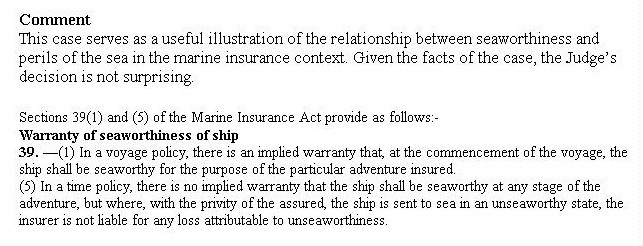
March 22 2006
Facts
Decision
Comment
In Marina Offshore Pte Ltd v China Insurance Co (Singapore) Pte Ltd [2005] SGHC 238 the insurers of a vessel lost at sea denied liability on the grounds that a diversion from the vessel's recommended course constituted a breach of warranty. The Singapore High Court was also asked to consider whether the vessel was unseaworthy at the start of the voyage.
Facts
Marina Offshore Pte Ltd purchased a steel-hulled coastal tug, the Marina Iris. The tug was insured by China Insurance Co (Singapore) Pte Ltd and AXA Insurance Singapore Pte Ltd. A pre-purchase survey was conducted before the tug sailed from Kobe in Japan to Singapore.
The tug was constructed as a coastal vessel, not an ocean-going vessel. Before the purchase was finalized, Marina Offshore instructed TG Marine Services Pte Ltd to conduct a condition survey while the Marina Iris was in Kobe. The survey report listed a number of matters which required Marina Offshore's attention before the Marina Iris could begin trading operations in Singapore or elsewhere in Southeast Asia. Marina Offshore decided that a large part of the repair work should be carried out in Singapore. Instead of being shipped on board a carrier, the Marina Iris was to sail under its own propulsion across the Pacific Ocean during the December monsoon.
Marina Offshore insured Marina Iris with China Insurance and AXA for one year. The cover included the delivery voyage from Kobe to Singapore. Both insurers required that a condition survey be carried out before the Marina Iris sailed. TG Marine Services carried out this survey. It was not disclosed to the insurers that the same company had previously carried out the pre-purchase survey. The condition survey contained six recommendations, one of which was the recommended route from Kobe to Singapore in fair weather.
Although gale warnings had been issued, the Marina Iris left Kobe on December 26 2003 with six Indonesian crew members. The tug sank 50 miles from Kobe with the loss of the entire crew.
Marina Offshore claimed an indemnity against the two insurers; both denied liability.
Decision
Considering that the insurers were affording cover to an unclassed tug, built for operations in coastal waters, to undertake a voyage across the Pacific Ocean, and that both policies expressly required the warranty surveyor's recommendations to be complied with before the tug sailed, the recommended route for the voyage was to be regarded as an insurance warranty. The significance of this point was that no question arose as to the materiality of the risk. The survey recommended that the tug navigate along Japan's Inland Sea coast. The tug did not follow this course; it left the Inland Sea and made for the North Pacific Ocean. It was found that Marina Offshore had breached the warranty and was not entitled to an indemnity under the policies.
Not every instance of loss or damage of which the sea is the immediate cause may be attributed to perils of the sea; such an attribution requires an element of casualty arising from something that could not have been foreseen as one of the necessary incidents of the venture. If the ship was seaworthy when it set out, on the balance of probabilities it must have sunk due to perils of the sea. Therefore, the seaworthiness of the Marina Iris had to be considered.
The term 'seaworthiness' refers not to a fixed standard, but to a relative standard which varies according to the ship and the exigencies of the voyage. A seaworthy vessel must have a competent master and a sufficient number of competent crew members. The Marina Iris was reported to have three masters. However, none of them possessed the qualifications required to be a master of the vessel for the voyage in question. As the vessel was improperly manned, it was unseaworthy when it left Kobe. In addition, it was unseaworthy in that its stability was in doubt. The insurers' surveyor expert stated that the tug was unusually high. The master was not provided with the requisite information regarding the stability of the tug and the stability booklet was not on board. The vessel was also found to be unseaworthy on the grounds that:
•it lacked the necessary pilot books and possibly important charts;
•the safety equipment on board had not been adequately checked; and
•there was reason to suspect that it had no equipment for receiving weather reports.
In light of the tug's inadequate manning and the insufficient attention paid to its stability for the voyage, it was found that it would take far greater evidence to persuade the court that the tug had been lost due to perils of the sea. Marina Offshore had not established that the loss was due to a peril of the sea and its claim was dismissed.
The court also considered whether the warranty of seaworthiness was implied under Section 39(1) of the Marine Insurance Act. Section 39(1) applies only to voyage policies. The court found that the polices in question were mixed policies. They initially covered the voyage from Kobe to Singapore, which met the definition of a 'voyage risk'. The tug was to have been repaired and classed in Singapore and insurance cover had been afforded for trading activities within the limits of the "Singapore home trade including Indonesian waters", a risk covered by the time policies. Therefore, a Section 39(1) warranty of seaworthiness was implied for the voyage from Kobe to Singapore. As the Marina Iris was unseaworthy when it left Kobe, the insurers were entitled to avoid liability. Even if the policies in question were considered to be time policies, the insurers were entitled to rely on Section 39(5) to avoid liability, as the vessel had been sent to sea in an unseaworthy condition with the shipowner's privity and had been lost as a result of its unseaworthiness.
Comment
This case serves as a useful illustration of the relationship between seaworthiness and perils of the sea in the context of marine insurance. Given the facts of the case, the decision is not surprising.
M/V "MARINA IRIS"と同じ押し船と思われるシエラレオネ船籍の押し船から韓国からインドネシアに向かっている途中で沈没し、数人の船員が死亡した。歴史は繰り返されると言う事だろう。
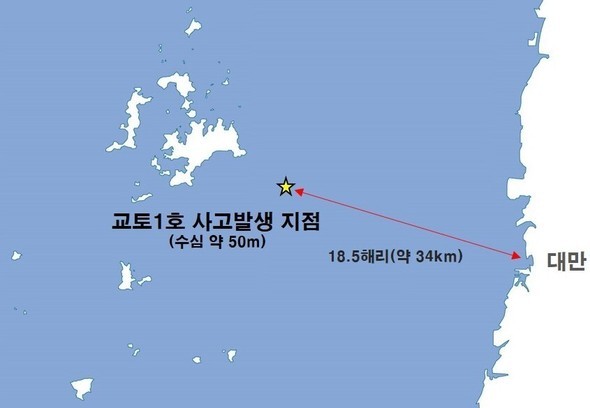
台湾海域で行方不明となった曳船「KYOTO1号」の事故海域で、2体の遺体が発見された。
外交部の当局者は8日、「(2体の遺体の)身元確認手続きが進められている」とし、「海洋警察庁の警備艦(3000トン級)1隻が9日午前11時ごろ、潜水士の乗った潜水支援艦が11日午後9時ごろに事故海域に到着し、捜索作業を行う」と述べた。外交部のイ・ウソン海外安全管理企画官は同日、オンライン記者会見を開き、「政府はKYOTO1号の捜索・救助作業に全政府レベルで可能なかぎりの資源を総動員することを決めるとともに、本日付けで中央災害安全対策本部体制に転換した」とし、「行方不明の船員の所在と安全の確認、船員の家族の支援に最善を尽くす」と述べた。国外の災害に関する中央災害安全対策本部体制では、外交部長官が本部長権限を行使する。
6人の韓国人船員が乗った曳船「KYOTO1号」(322トン)は、3000トン級のバージ船「KYOTO2号」を引き、釜山(プサン)港からインドネシアのバタム港へ向かう途中、台湾西方34キロの海域で遭難事故にあったことが、7日午前9時50分に台湾の海上捜索当局に通報されている。
行方不明となっているKYOTO1号の6人の船員は全員が釜山に住む韓国人で、70代と60代がそれぞれ3人ずつ。KYOTO2号は搭乗者がおらず、8日夜に台湾南部の高雄港に曳航された。KYOTO1号は322トン、シエラレオネ船籍。船会社はアラブ首長国連邦の「シー・シスター・シッピング(Sea Star Shiping)」。
写真を見る限り、日本で建造されたプッシャーとバージのセットのような。㈱新山本造船所で建造された明神丸に似ている。㈱新山本造船所で建造された第貳拾壱玉吉丸のIMO番号が9033531なのでもしかしたらと思うが、検索に引っかからないので何とも言えない。英語ではトーイング(曳航)を表現しているが、船に見えるように合体して押していたと思う。曳航などスタビリティの悪いプッシャーだと不可能だと思う。プッシャータブボートは写真で見れば素人でも分かると思うが安定が悪い。単独では平水区域でも危ないと思う。国際航海を想定して建造されていないし、まともな船級の規則であれば絶対に検査に通らないと思う。
船員達はリスクを理解した上での航海だったのか知らないが、後悔しているかもしれない。
プッシャーバージの安全規制の見直しについて(案) (国土交通省)
開けない人はここをクリック
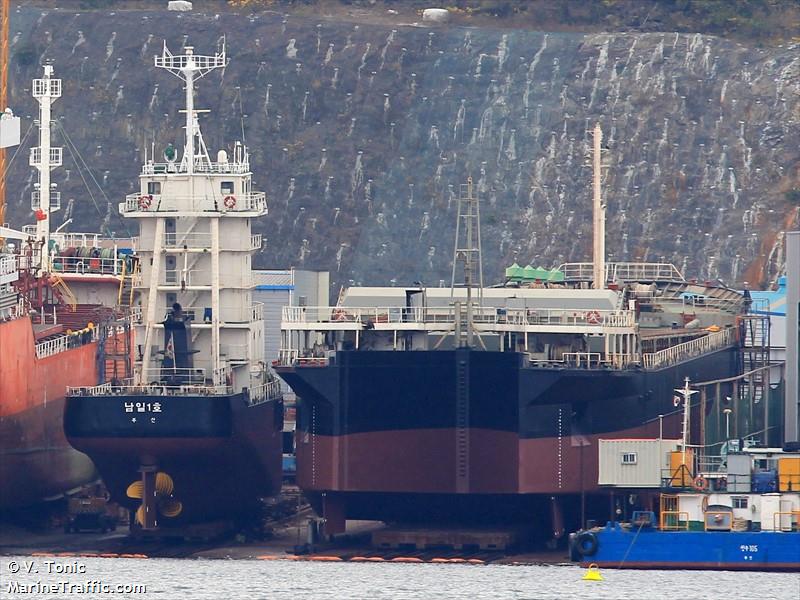
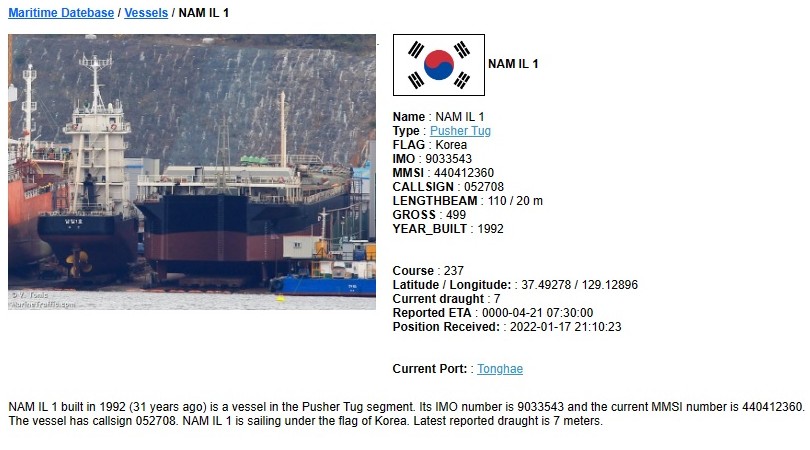
NAM IL 1 built in 1992 (31 years ago) is a vessel in the Pusher Tug segment. Its IMO number is 9033543 and the current MMSI number is 440412360. The vessel has callsign 052708. NAM IL 1 is sailing under the flag of Korea. Latest reported draught is 7 meters.
NAM IL 1 MARITIME-DATABASE.COM
by Mikhail Voytenko
Pusher tug KYOTO 1 issued distress signal on Apr 7 between Penghu islands and western Taiwan coast, Taiwan Strait, while pushing barge from Busan to Batam Indonesia. Understood all crew, 6 seamen, are missing, SAR under way. According to latest updates, tug sank.

By Fabian Hamacher and Hyonhee Shin
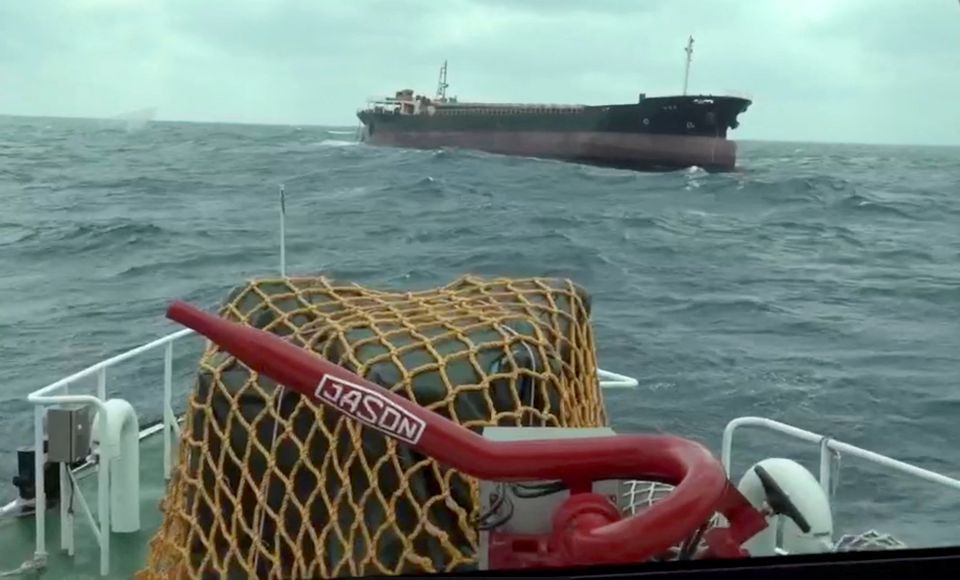
An empty vessel reported to be Kyoto 2, which was towed by a ship that went missing on its way from the South Korean city of Busan to Indonesia's Batam port, is seen near the Penghu Islands, in the Taiwan Strait, in this screengrab taken from a video dated April 7, 2022. . Taiwan Coastguard/Handout via REUTERS
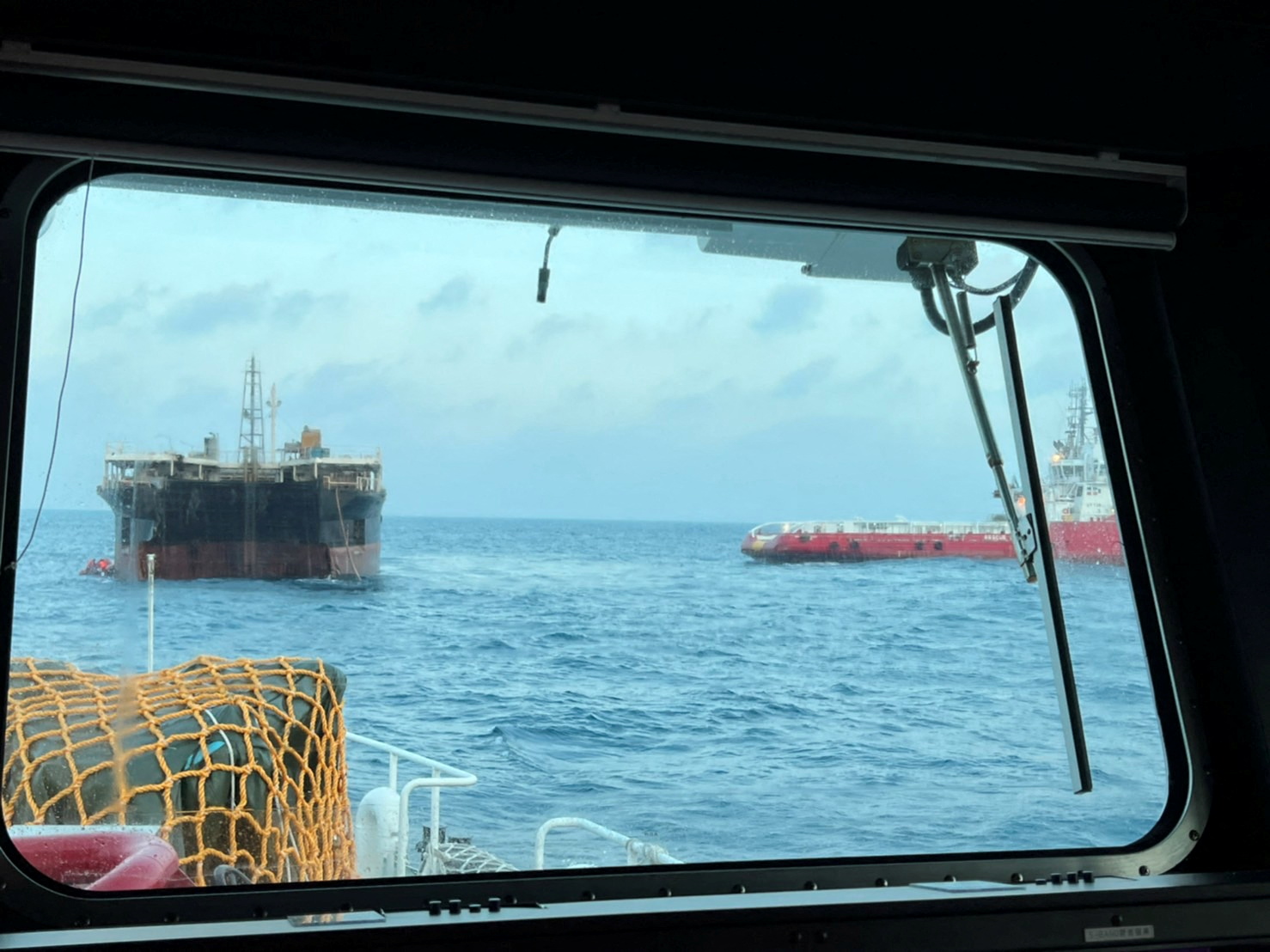
An empty vessel reported to be Kyoto 2 (L), that was towed by the missing ship on its way from the South Korean city of Busan to Indonesia's Batam port, is seen after being found near the Penghu Islands, in the Taiwan Strait, April 8, 2022. Taiwan Coastguard/Handout via REUTERS
TAIPEI/SEOUL, April 8 (Reuters) - Taiwan has recovered two bodies after a ship carrying six South Koreans went missing in the Taiwan Strait, and search and rescue operations are under way, the Taiwanese and South Korean governments said on Friday.
Reporting by Fabian Hamacher and Hyonhee Shin; Additional reporting by Ben Blanchard in Taipei; Editing by Stephen Coates and Raju Gopalakrishnan
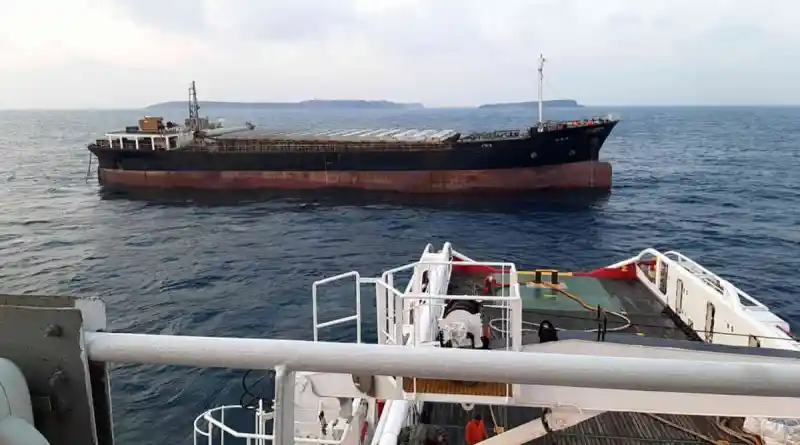
Taiwan’s National Coast Guard Administration personnel recovered two bodies this morning during a search for a Korean-owned pusher tug with six crew aboard that went missing after sending a distress call yesterday, April 8. The Sierra Leone-flagged tug Kyoto No. 1 was en route from the Port of Busan, Korea to Batam, Indonesia via the Taiwan Strait when the crew sent a distress signal from a position close to the Penghu Islands at 9:50 am, Thursday. Taiwan’s National Rescue Command
次の更新まで続く。
http://www.yomiuri.co.jp/national/news/20031227i503.htm
読売新聞より
和歌山県沖でパナマ船沈没…4人心肺停止、2人不明
http://www.yomiuri.co.jp/national/news/20031227i503.htm
読売新聞より
乗員4人死亡、2人不明 美浜町日ノ御埼沖 タグボート沈没か
http://www.agara.co.jp/DAILY/20031228/20031228_001.html
紀伊民報AGARAフラッシュニュースより
コメント:運が悪ければ 宮崎市にホンジュラス船籍のタブボート「キンユウ号」が座礁して間もなく半年と 同じ運命になったかもしれない。 それとも、 比貨物船転覆 奄美沖で漂流の1人救助、7人不明-元実習船、広島からフィリピンへ回航中 と同じケースだろうか!
下記のサイトで紹介されている3隻の船舶の内、2隻は中古の輸出船です。 このように中古の輸出船が問題であることはわかっていると思われますが???? 何も改善されていません。北朝鮮の貨物船座礁問題で、保険の義務付けになるようですが。 中古の輸出船に対しては、何もしないのでしょうか。行政には困ったものです。 地方自治体は、このような問題の背景を理解しているのでしょうか。
東奥日報より
台船座礁、早期の船体撤去を
遠洋の曳航のためのガイドラインがIMOから発行されている。これは、MSC/Circ.884で ある。これは、国際遠洋曳航(International ocean tweing operations)に適用される。 このなかで、遠洋曳航(Ocean Towing)の定義が、Towing operations where the distance between designated ports of refuge or safe anchoring along the route is more than 24 hours, taken into account weather conditionsと書かれている。つまり、 24時間以上の航海を遠洋曳航になる。24時間で北海道から韓国の目的地までたどり着ける ことができるかが、適用されるかの基準となる。適用されない場合でも、最低限の基準は 決めておくべきであろう。これは、日本と地方自治体の責任で問題を処理すべきなので、 それぞれが決めればよいことである。しかしながら、同じ過ちを繰り返すのは思慮が足りない ように思える。死者が出るまで問題を放置するのは、日本の常識であろうか。
|
◆サブスタンダード船
◆サブ・スタンダード船と旗国の関係 ◆なぜ、サブ・スタンダード船? ◆サブスタンダード船の見つけ方 ◆サブスタンダード船の写真 ◆検査会社の問題 |
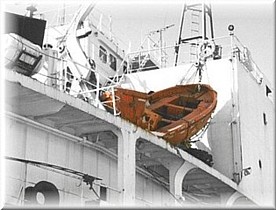 ★HOME |
◆海運関連業界
◆なぜ、サブ・スタンダード船? ◆BLUE OCEAN(ブルーオーシャン)の事故 ◆座礁船及び放置船 ◆PSCによる検査の現状 ◆船舶油濁損害賠償保障法 |
|---|
リンク先の中には繋がらないものもあると思いますが、ご容赦ください。